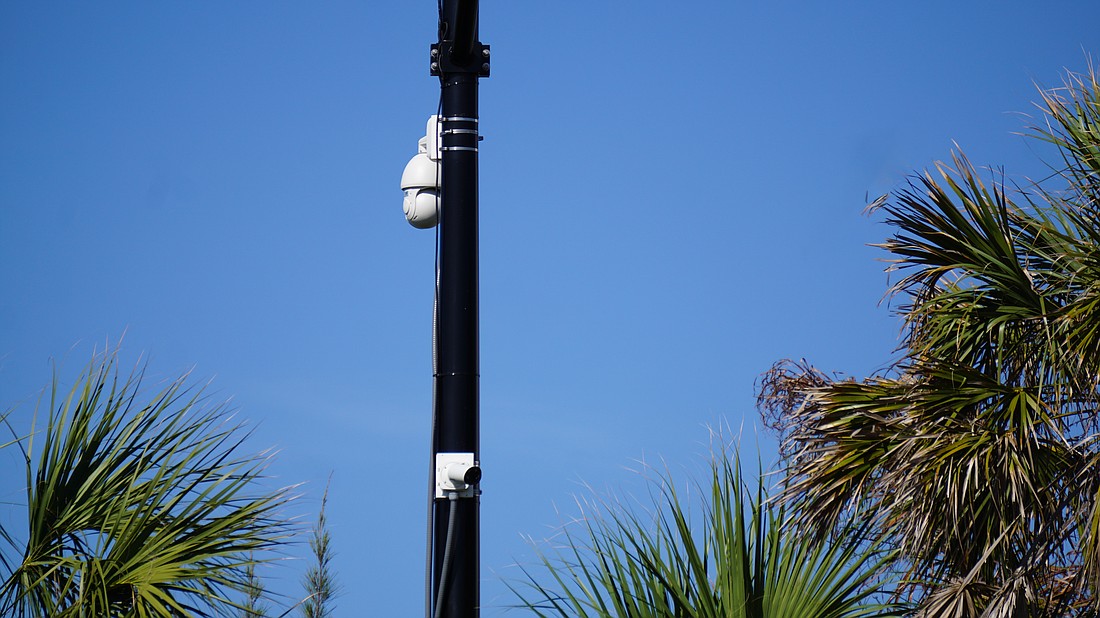- July 26, 2024
-
-
Loading

Loading

Can a city get smarter?
With software available in today’s day and age, yes. The town of Longboat Key will soon finalize both internal and public-facing software to implement smart city technologies.
As a part of the underground utilities project, the town decided to install a fiber optic network and remove itself from a wireless network. Switching to a private fiber optic network results in faster internet speeds and cost savings, since the town no longer has to pay for wireless service.
With a private fiber optic network, there were other opportunities the town wanted to take advantage of, according to Chief Information Officer Jason Keen.
“We originally wanted to do some type of smart city pilot to kind of explore what opportunities the town would have, especially with the fiber undergrounding,” Keen said.
This led to the decision to embark on a three-year pilot study to implement several smart city technologies. Three companies are on board for the project: vTECH io, EPIC iO and Dell.
First is a pedestrian safety sensor installed at the crosswalk next to Bayfront Park which leads to the public beach access.
The camera captures footage that can be used to analyze how effectively cars and pedestrians interact at the crosswalk, including rates of near misses with cars. If the analysis goes well, Keen said this may expand to other crosswalks in the town.
There are two other cameras in the Bayfront Park area, one of which is pointed at the public beach.
Don’t worry, it won’t capture you getting a tan. But it will show beach and ocean conditions.
Similarly, a camera is located near the center of Bayfront Park and looks out onto the bay side to capture bay conditions.
Keen said he’s working with the software developers to ensure the public’s privacy before fully implementing these two cameras. The feeds will be available to the public.
“They’re going to be adding facial filters on there so that way, if it does catch anybody, it adds that layer of privacy,” Keen said.
The last smart city tech has to do with cameras mounted at either end of the island, above the existing license plate readers used by the Longboat Key Police Department.
“What we want to know is what type of vehicles are coming on the island, how many, trying to get more accurate traffic counts,” Keen said. “And then we’ll try to be proactive with car carriers.”
Analyzing data captured from these cameras will give the police a better idea of when car carriers are likely to be on the island.
This project was about a year and a half of work, according to Keen. The biggest challenge, he said, was getting all the infrastructure in place with the undergrounding project.
In nearby municipalities, smart city technology isn’t commonplace yet. Keen said he’s only heard about similar beach condition technology in Sarasota County.
The beach and bay condition cameras could be even more useful than just a superficial glance.
Keen said he wants to look into possible software that could be used in red tide monitoring if the situation were to arise.
With regards to the cameras on the north and south end, Keen said there exists the possibility to make those public-facing in the future. That way, residents could take a look at the traffic status on either end to see how backed up it is.
Additionally, he believes that other sensors could be implemented in low-lying areas to record data on flooding and water levels.
An air quality sensor was also supposed to be included in the pilot study, but that’s one piece the town hasn’t seen yet, Keen said.
At the April 15 Town Commission strategic planning retreat, Town Manager Howard Tipton talked with commissioners about the technology and added that the town will soon pursue electronic messaging boards for both the north and south ends.
“We’ll take a look and see how we want to move forward with that, that’s all part of that smart city infrastructure,” Tipton said.
For now, though, Keen said he hopes to have the public-facing beach and bay condition cameras ready for viewing by the end of May at the latest, pending some software finalization.